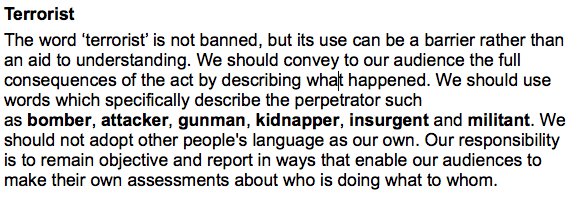If you think putting all the accents on Société Générale is a bit of an effort, imagine picking up a story that combines Turkish with Middle-earth:

For years, the software at the Tribune offered only the English alphabet plus the common western European diacritical marks (acute, grave, umlaut, tilde, etc) for editing purposes. But the latest upgrades now offer a splendid range of glyphs, allowing us to range typographically much further into the east and south of the continent. The only question now is: how much should we use them?
The Tribune’s policy for a while was simply not to put accents on any foreign word at all – a bald, if even-handed, approach that raised eyebrows with readers and caused anguish among the multilingual members of the subs’ desk. That policy was subsequently modified to a more common and pragmatic approach commendable for its humility:
accents Use them in French and German words that take italic. In foreign words that have become part of the English vocabulary – cafe, cliche, detente, denouement, debacle, protege etc – no accent is required …
Keep accents on proper names. Thus: ‘Arsène Wenger was on holiday in Bogotá with Gérard Houllier’ … In general, other marks such as Turkish should be avoided for fear of introducing errors as much as difficulty in checking
Now, however, with the full expert character set at our disposal, the policy is to go for it all: every unfamiliar word and name rendered as it should be in its native language. That, you would think, is the definitive, unarguable solution. But even this approach – assuming your font library can stand it – raises one or two questions.
The total-accuracy policy does not extend, of course, to languages with entirely non-Roman alphabets – Russian, Greek, Chinese, etc. English-language newspapers don’t expect their readers to be able to understand them. But several Turkic and Baltic languages have many characters that are not classically Latinate and are certainly unfamiliar in English. Turkish, for example, has a 29-letter alphabet, including six letters that don’t appear in English: ç, ğ, ı (a dotless “i”), ö, ş, ü. Their sound and function is a closed book to many general readers. Doesn’t that make them as much candidates for transliteration as π or Σ in Greek?
There are pros and cons for all three of these approaches, as set out below. On balance, I’m glad we’re going for (3), even though there’s obviously a risk we may end up with a broad-based version of (2).
And once I’ve checked all the Turkish, it’ll be time to tackle Hobbit nomenclature!
(1) Removing accents and foreign characters completely
Pros
• Impressively and genuinely consistent
• Avoids the slightly uneasy relativism of approach (2)
• Easy to remember and enforce
Cons
• Every multilingual reader will see, and frequently object to, what you’ve done
• Faint hint of insularity (don’t they speak any languages?)
• Theoretical risk of confusions over near-homonyms that differ only by a diacritical mark or character (but, then again, only to readers who speak the language)
(2) Putting in accents and foreign characters for locally familiar languages only
Pros
• Relatively easy to remember and enforce
• Fits quite well with your audience’s likely linguistic knowledge
• Possibly as much as your technology can reliably achieve
Cons
• Which languages are actually “commonly spoken” in your area? Or are you just paying attention to the ones the chief sub speaks and ignoring the others?
• Can be unconsciously revelatory of the limits of your expertise, or at least your horizons
• Can look very awkward when words in a language you do put accents on appear in the same story as words in a language you don’t
(3) Putting in accents and foreign characters for all Latin-alphabet languages
Pros
• The gold standard for accuracy
• A genuine editing challenge
• Impressively authoritative and literate
Cons
• May be more than your software can manage
• Finer distinctions may be lost on, or intimidating for, readers
• Are you sure you’ll always recognise when there are characters or diacriticals missing? How’s your Lithuanian?*
*32 letters, 5 digraphs
Tags: accents, diacritical marks, style, sub-editing























